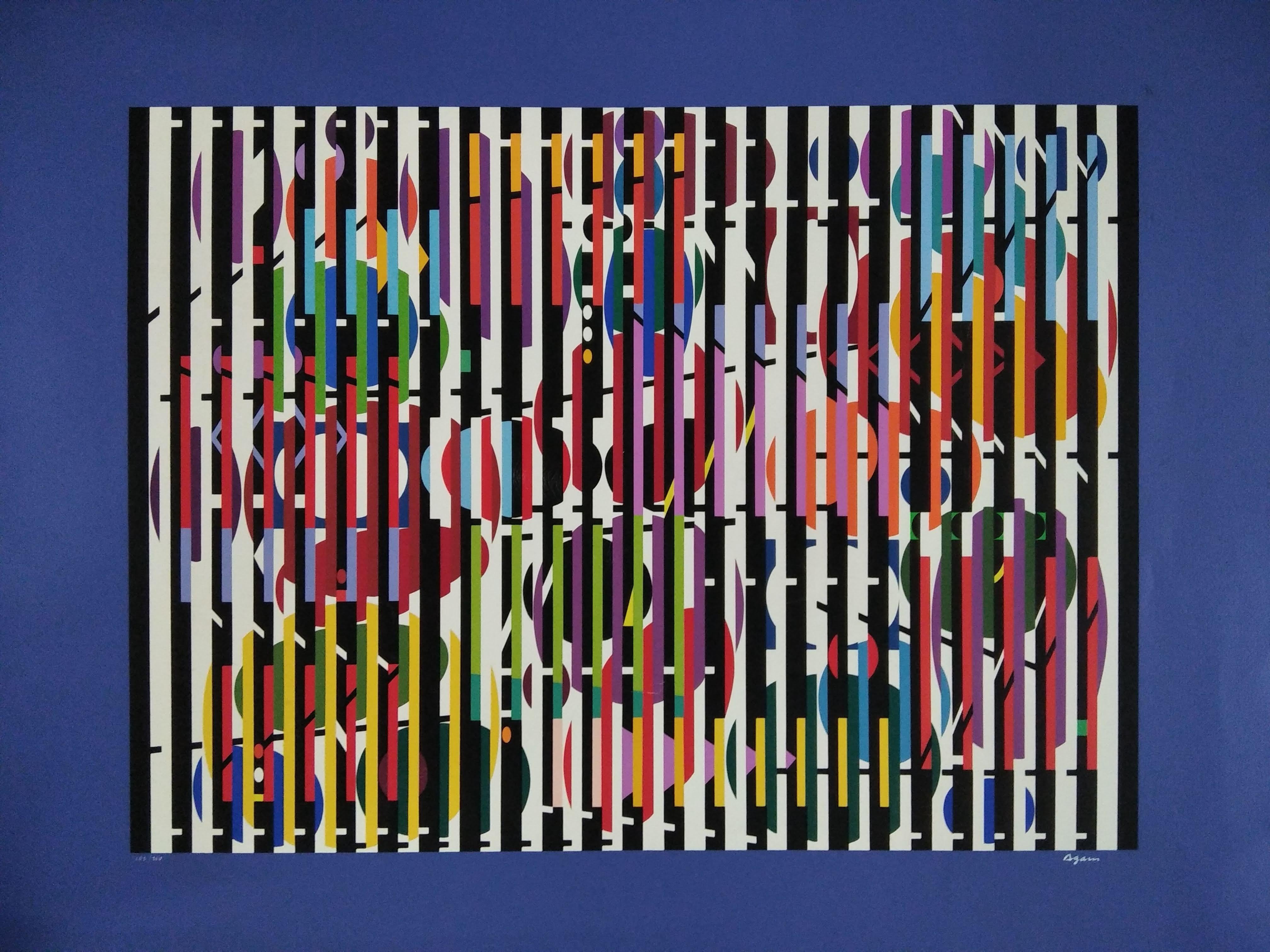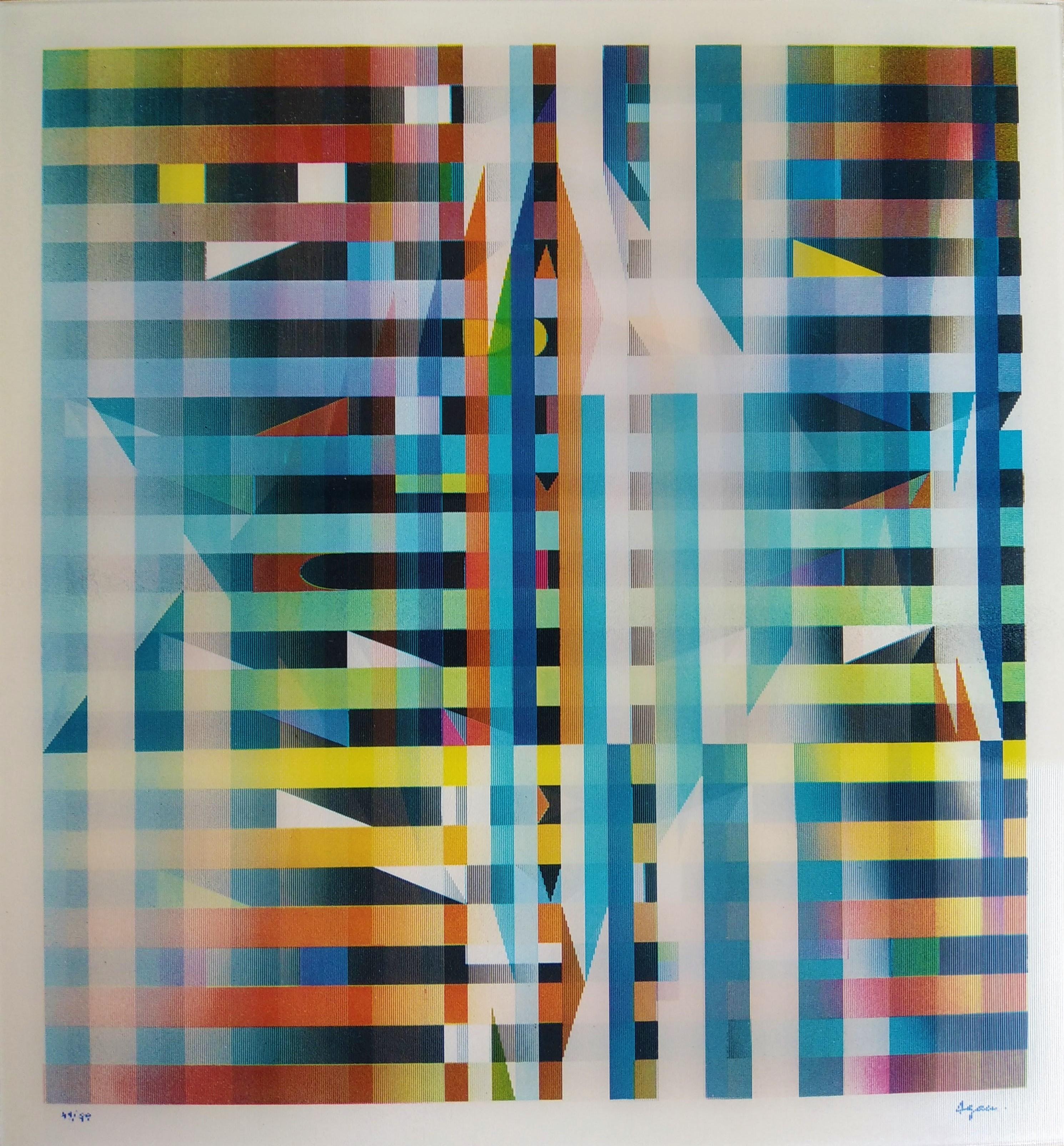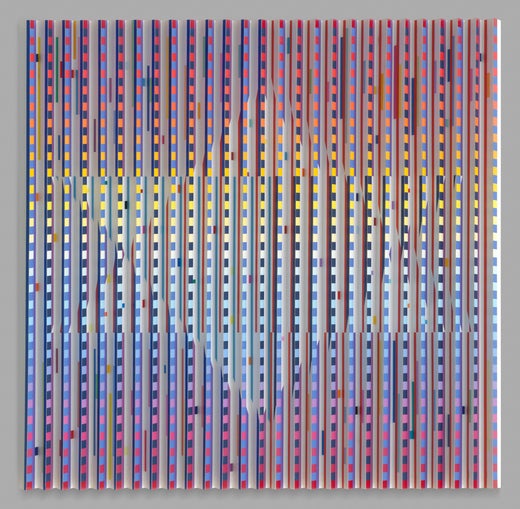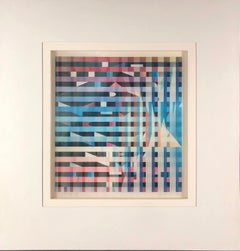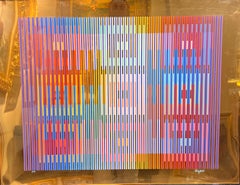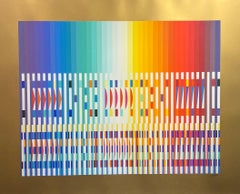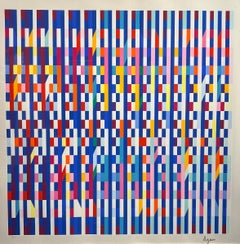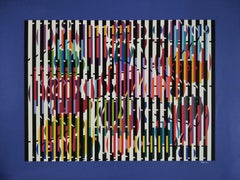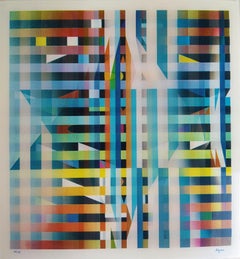Yaacov AgamAbstract Composition
About the Item
- Creator:Yaacov Agam (1928, Israeli)
- Dimensions:Height: 22.5 in (57.15 cm)Width: 24.5 in (62.23 cm)Depth: 1 in (2.54 cm)
- Medium:
- Movement & Style:
- Period:
- Condition:
- Gallery Location:Missouri, MO
- Reference Number:1stDibs: LU74735010761
Yaacov Agam
Influenced by his upbringing in Judaism as well as the teachings of the Bauhaus, Yaacov Agam is a pioneer of kinetic art as well as the Op art movement and is often credited with introducing geometric abstraction to his home country of Israel.
Born in Rishon LeZion, Palestine — now part of Israel — the son of a rabbi, Agam found that the spiritual world had a major influence on his art practice, as did the sand dunes he grew up watching as they constantly shifted with the wind. This perpetual movement would inform his work, whereby riveting, prismatic compositions that transform from different perspectives, patterns that generate optical effects and sculptures that move with a passing breeze all reflect the gradual changes in nature.
Agam studied with Israeli painter Mordecai Ardon at the Bezalel School of Art in Jerusalem in the 1940s before traveling to Zurich where he trained with Swiss Expressionist painter Johannes Itten and was inspired by the abstract work of Russian painter Wassily Kandinsky.
One of the innovative techniques Agam developed was the Agamograph, which uses lenticular printing so that multiple images, which are revealed as the viewer moves around the piece, can be seen on a single work. His art has regularly involved the spectator as a participant, whether it’s the 1972–74 room-size kinetic installation he created for the Elysée Palace that’s now in the Centre Pompidou in which a gleaming abstract sculpture is surrounded on all sides by polychromatic lines or it’s public art like the 1986 Fire and Water Fountain in Tel Aviv with circles of vibrant panels that offer varying colors from every angle.
In 2018, the Yaacov Agam Museum of Art opened in Rishon LeZion, showcasing six decades of Agam’s influential work that engages with perception through color, shape and form, from paintings, prints and installations to new experiments in interactive digital art.
Find a collection of Yaacov Agam art today on 1stDibs.
- ShippingRetrieving quote...Shipping from: Missouri, MO
- Return Policy
More From This Seller
View AllLate 20th Century Modern Abstract Prints
Screen
20th Century Abstract Abstract Prints
Lithograph
20th Century Abstract Abstract Prints
Lithograph
20th Century Abstract Abstract Prints
Lithograph
20th Century Abstract Abstract Prints
Lithograph
20th Century Abstract Abstract Prints
Lithograph
You May Also Like
Early 2000s Abstract Geometric Abstract Prints
C Print
Early 2000s Op Art Abstract Prints
Lenticular
Early 2000s Abstract Geometric Abstract Prints
C Print
1980s Abstract Abstract Prints
Screen, Plexiglass
1980s Op Art Abstract Prints
Lithograph
1980s Abstract Abstract Prints
Mirror, Screen, Plexiglass
